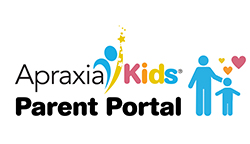Parents and therapists alike may become frustrated by slow, plateaued, or lack of progress the child is making in speech therapy. Maybe the child is “acting out,” or “misbehaving” in speech. Everyone is anxious for the child to speak and communicate better.
At this point in the therapeutic journey, it is important for the therapist and parents to take a step back and reframe their perspective. Let’s dig in to the why.
Why isn’t the child making progress, actively participating, and behaving as “expected?”
Apraxia of speech is a motor speech disorder that cannot be fixed or cured by tough love. Children impacted by apraxia of speech must work so hard in speech therapy sessions, and most often, they are in multiple sessions per week. How exhausting!
First, speech therapy is hard work. Really hard. No one wants to sit for an extended period of time to work on things that are hard (especially things that seem to come easy for other people!). Let’s remember that expectation we put on our kids. As a therapist, I often explore the 20/80 theory, where we do 20% hard things in the session, and 80% work on things they’re successful with already, perhaps refining. Success builds confidence and willingness to participate. The therapist can adjust this measurement in time.
Second, Depending on the age of the child, the session may not be conducive to their developmental needs. For example, a young child with sCAS (suspected CAS) or CAS may not be able to sit down and attend for extended periods of time. The therapist should be able to restructure the session and demands to meet the child where they are, developmentally. Additionally, very young children or children with mixed expressive and receptive language challenges may not be able to fully understand the prompts, cues, and directions that the therapist is providing. If this is the case, the child could become frustrated from lack of understanding, and ability to express themselves.
A child with apraxia who has other neurodevelopmental disabilities may have additional challenges. Their unique neurologic profile and sensory needs will need to be respected. A skilled, caring therapist will be able to modify the environment and activities to meet the individual needs of the child, as well as collaborate with the family and any other providers on the child’s team to be sure they’re using neurodiversity affirming practices to support the child.
Above all, the main goal for the therapist in this situation is to form a meaningful rapport with the child. The primary goal should never be compliance, rather, cooperation and communication. The mark of a talented therapist is one that forms a strong relationship with the child based on trust, safety, and fostering intrinsic motivation. Forming a trusted relationship with the child will allow a child to feel more vulnerable and be a more willing participant in therapy. When a child is engaged, they’re learning. When they’re learning, they’re making progress.
The trajectory of therapeutic progress for any child, including one with CAS, is never linear. This can of course feel frustrating and defeating. Many opportunities along the way will prompt the therapist, family, and team to take a step back and re-evaluate how to meet the needs of the child at that period of time in their life. Children can become burned out from all of the hard work and they would benefit from pulling back for a few sessions or taking a short break to renew. Armed with knowledge of how best to support the child in a respectable and meaningful way is the surest way to meet the child’s speech and language goals.
For additional information, find another resource here, at Therapist Neurodiversity Collective:
https://therapistndc.org/unemployed_fortnite_and-cheetos/
By Abby Foltz Hottle, MA CCC-SLP
Asst. Professor / Graduate Clinical Supervisor
University of Cincinnati
College of Allied Health Sciences
Department of Communication Sciences and Disorders
January 2021
